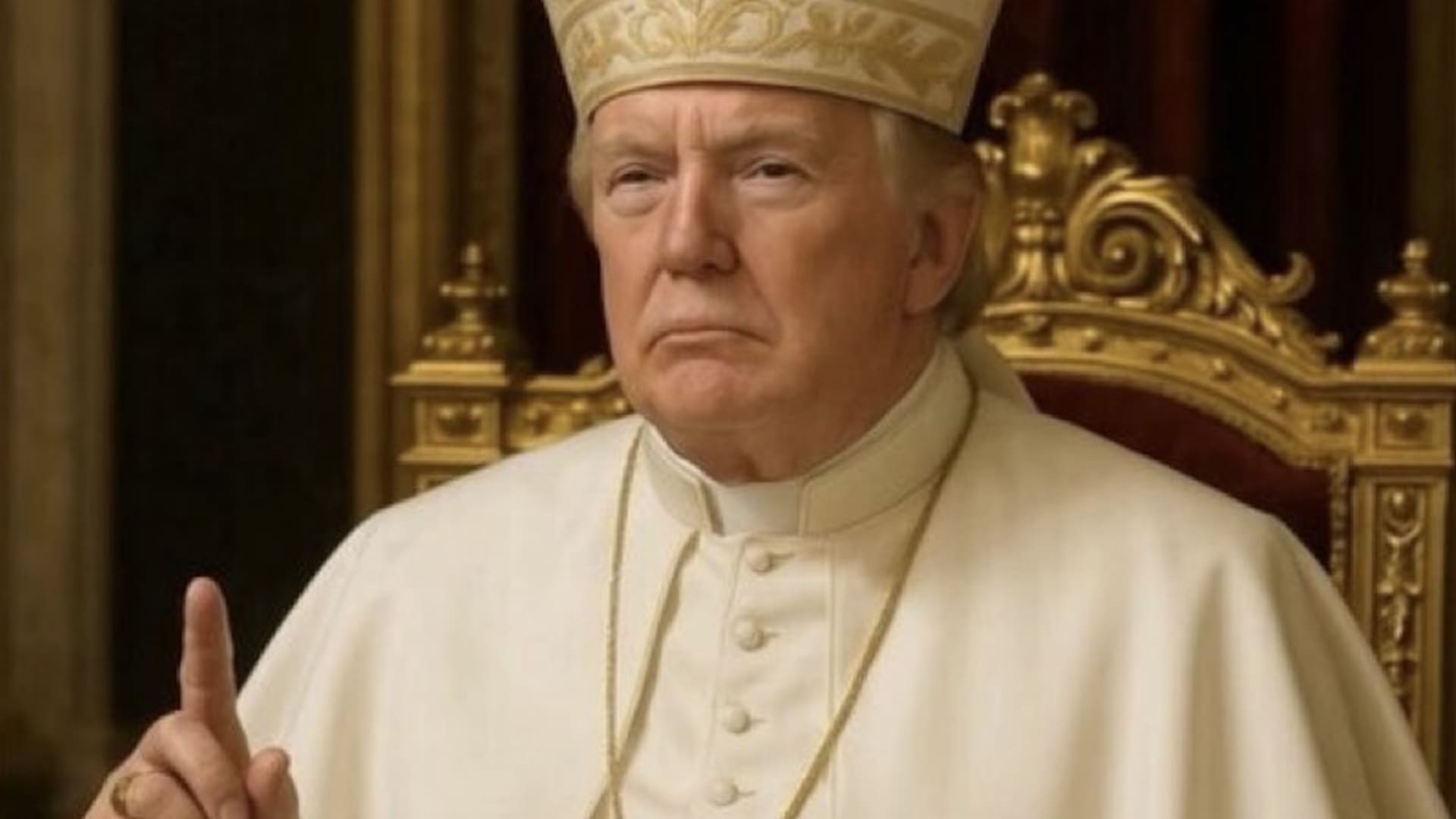The AI-Pope Image Controversy: A Multifaceted Analysis
In the digital age, the convergence of technology, politics, and religion often leads to complex and controversial scenarios. Donald Trump’s recent posting of an AI-generated image of himself as the Pope is a prime example, sparking a flurry of reactions and raising critical questions about the appropriateness and implications of such digital maneuvers.
The Genesis of the AI-Pope Image
The sequence of events began innocuously enough with a light-hearted remark by Vice President JD Vance on X. Vance jokingly suggested that Senator Marco Rubio could take on more responsibilities, hinting at a potential role as the Pope. This comment set the stage for Trump’s more provocative move. Leveraging his known penchant for stirring controversy, Trump shared an AI-generated image of himself in papal attire on his Truth Social platform. The image, which subsequently appeared on the White House’s X account, depicted Trump in full papal regalia, complete with a large crucifix and a throne.
The Timing and Context
The timing of Trump’s post is particularly significant. It occurred just days before the papal conclave, a pivotal event in the Catholic Church where cardinals gather to elect a new pope. The image was shared while the global Catholic community was still in mourning following the death of Pope Francis, adding a layer of sensitivity to the situation. Trump’s attendance at Pope Francis’ funeral in Rome further complicated the narrative, making his post even more contentious.
Public and Media Reactions
The response to Trump’s AI-Pope image has been a mosaic of amusement, outrage, and criticism. On X, where the picture garnered over 78,000 likes, users expressed a wide range of opinions. Some found the post humorous, while others accused Trump of making a mockery of the pious and the Catholic faith. The image was also criticized for being insensitive, with many viewers perceiving it as a disrespectful jab at Pope Francis’ memory.
Media outlets worldwide covered the story, highlighting the controversy and the diverse reactions it elicited. The image was described variously as a “spoof” and a “joke,” but the humor was lost on many who saw it as disrespectful and inappropriate. The White House’s decision to share the image on their official X account further intensified the debate, with some questioning the appropriateness of such a post from a government-run social media account.
The Role of AI in Modern Communication
This incident underscores the growing role of AI in modern communication and politics. AI-generated images, often referred to as deepfakes, have become tools for both entertainment and misinformation. In this case, the AI-generated image of Trump as the Pope was created using advanced algorithms, likely from models like OpenAI’s 4o. The ease with which such images can be created and shared raises serious concerns about authenticity and the potential for misuse.
The Political Implications
Politically, Trump’s post can be viewed as a strategic move to maintain his presence in the public eye and stir controversy. It aligns with his past behavior of using social media to provoke reactions and dominate news cycles. However, it also risks alienating a significant portion of his base, particularly those who are devout Catholics and view the post as disrespectful. This incident highlights the delicate balance between maintaining relevance and respecting the sensitivities of one’s audience.
The Ethical Considerations
The ethical implications of Trump’s post are profound. It raises questions about the boundaries of free speech, the respect for religious sentiments, and the responsibility of public figures in their communication. While Trump may argue that the post was a joke, the context and timing make it a sensitive issue. The Catholic Church, with its global following, is a powerful institution, and any perceived disrespect can have far-reaching consequences. Public figures must be acutely aware of the power of their words and actions, especially in an era where information travels at lightning speed.
The Broader Impact
Beyond the immediate controversy, this incident highlights the broader impact of AI and social media on society. As AI technology continues to advance, the lines between reality and fiction become increasingly blurred. This raises important questions about how we verify information, the role of media in shaping public opinion, and the ethical use of technology. The AI-Pope image serves as a stark reminder that while technology can be a tool for creativity and expression, it must be used with caution and respect for the sensitivities of others.
Navigating the Complex Landscape
The intersection of technology, politics, and religion is a complex landscape fraught with challenges and controversies. As we navigate this terrain, it is crucial to foster a culture of responsible communication. Public figures, in particular, must be mindful of the power of their words and actions. The AI-Pope image is a microcosm of the broader issues at play, serving as a cautionary tale about the potential pitfalls of unchecked digital expression.
Conclusion: Responsible Communication in the Digital Age
In conclusion, Donald Trump’s AI-Pope image is more than just a social media stunt. It is a reflection of the intricate challenges that arise from the intersection of technology, politics, and religion. As we move forward, it is essential to promote a culture of responsible communication. Public figures must be acutely aware of the impact of their actions and the potential consequences of their digital expressions. The AI-Pope image serves as a poignant reminder that while technology can be a powerful tool, it must be wielded with care and respect for the sensitivities of others. In an era where information travels at the speed of light, the need for thoughtful and respectful communication has never been more critical.

